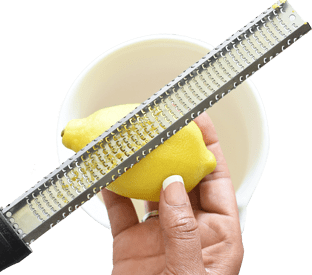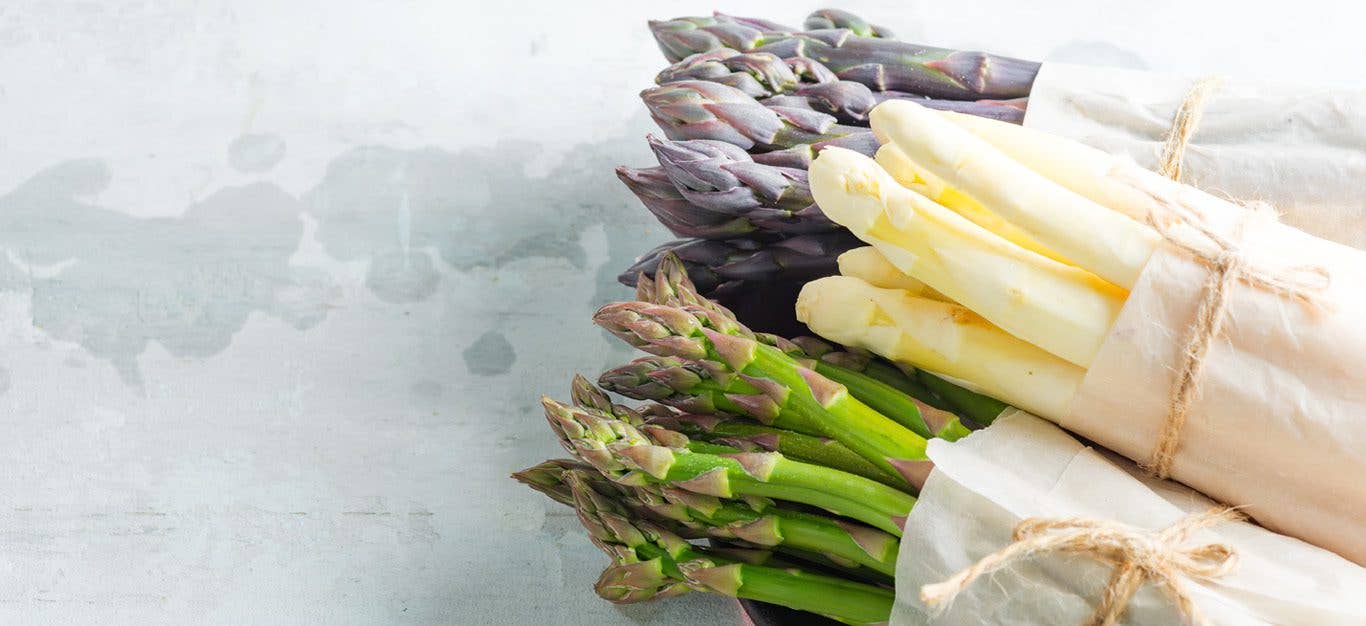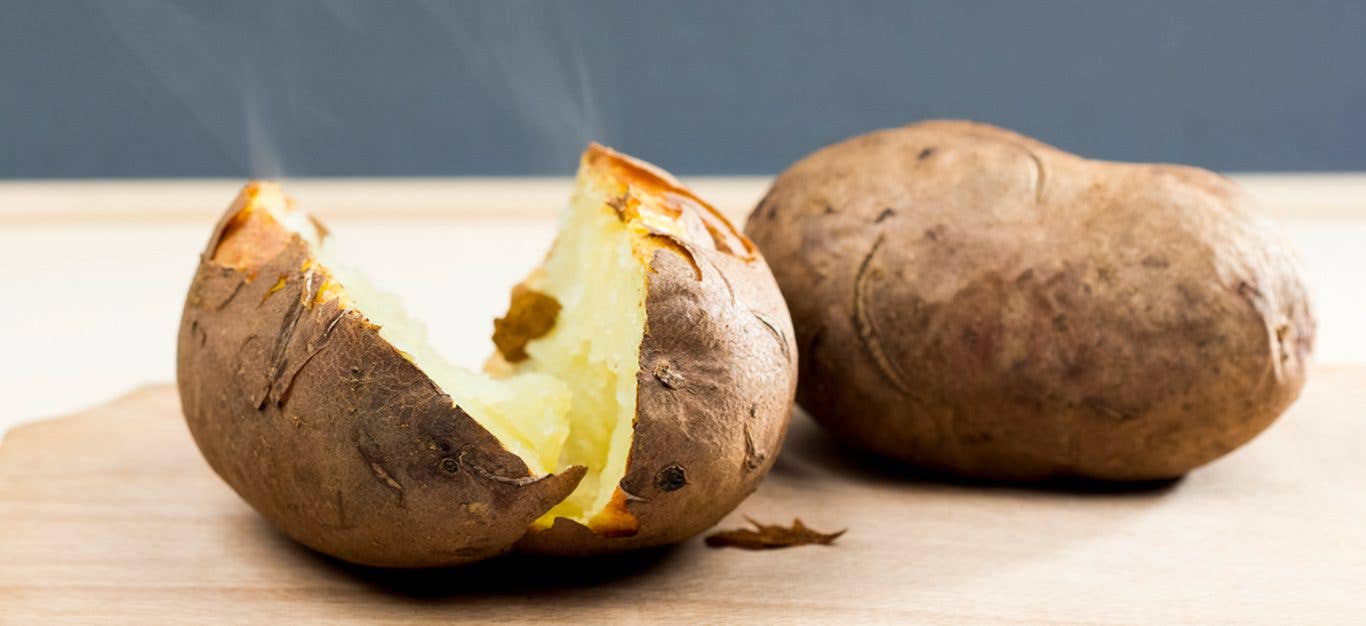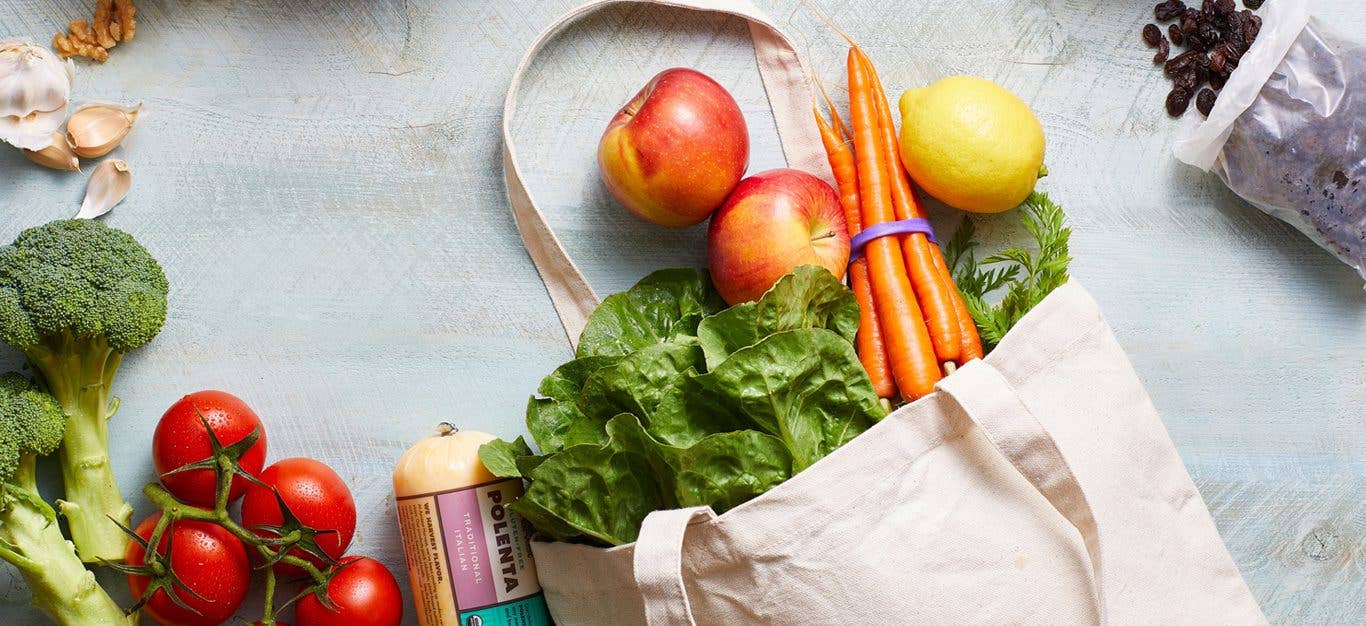The harvest season lives up to its name with all the wonderful produce on offer once the weather turns cool. Read on for a guide to the fruits and vegetables that are in season from early fall through early winter.
FALL VEGETABLES
FALL FRUITS
FALL SEASONAL VEGETABLES
Gather a cornucopia of the following vegetables, which are all in season during the fall.
ARTICHOKES
Most people think of artichokes as a spring vegetable, but the leafy globes have a second, smaller harvest that happens in the fall. Steamed, whole artichokes make healthy, elegant starters and they’re delicious paired with a bowl of soup as a light supper. Learn more about artichokes and get recipe ideas in our guide Ingredient IQ: Artichokes.
Selection Choose artichokes with thick leaves that cling tightly to the head and “squeak” when rubbed. A little browning on the leaf tips is OK, but avoid artichokes with brown stripes, spots and droopy leaves.
Storage Artichokes are actually the flowers of a thistle plant, and like most flowers they like cool, humid conditions. Store in the crisper drawer or in a sealed container in the fridge for three to five days.
BROCCOLI
Like other cruciferous vegetables that are so readily available they seem seasonless (hello, kale), broccoli grows best in cool temperatures, which keep it tender and sweet and prevent the stalks from bolting and going to flower. Broccoli is delicious in mac and cheese and other pasta dishes; it also makes for flavorful pureed soup, such as our Cream of Broccoli Soup. For more ideas, check out our roundup of Vegan Broccoli Recipes We Love.
Selection Pick broccoli heads with hard, firm stems, tight florets, and no yellowing anywhere. The cut end of the stem should look fresh, not dry.
Storage Refrigerate whole broccoli heads immediately and use within three to five days. Or cut the heads into florets so they’re ready to use and store in a paper towel-lined container for up to three days.
BROCCOLI RABE/BROCCOLINI
The long-stemmed broccoli cousins have a bitter flavor that works well in hearty fall dishes. In addition to preparing them as a broccoli swap, try broccoli rabe and Broccolini in place of bitter leafy greens such as kale and collards. Note that broccoli rabe is more pungent and bitter than Broccolini and takes one or two minutes more to cook.
Selection Look for long, firm stems topped with dark green florets that show no signs of yellowing.
Storage Remove any plastic packaging and refrigerate in a paper or mesh bag or a lidded container for up to seven days.
BRUSSELS SPROUTS
Now available year-round, Brussels sprouts used to be a fall and winter delicacy. The key to keeping them delicious (and winning over Brussels sprouts haters) is not to overcook them, which brings out their cabbage-y side. Roasting is a good way to do that, and roasted Brussels sprouts can even be used as a pizza topping! Serve them up with a succulent sauce, such as in our Brussels Sprouts with Maple-Mustard Sauce and Creamy Brussels Sprouts with Sun-Dried Tomatoes. For more recipe ideas and tips for cooking with them, check out our guide to Brussels sprouts.
Selection Brussels sprouts are sold loose, bagged, and still on the stalk. Select sprouts that are similar in size (for even cooking) and vibrant green with tight heads of leaves. When buying pre-bagged Brussels sprouts, avoid packages with collected moisture inside, which is a sign they’ve been on the shelf a while.
Storage Remove from packaging or cut off stem, and refrigerate in a bowl or lidded container for three to five days.
CARROTS
Before Dutch growers took over the carrot market with orange varieties in the 17th century, the root vegetables came in a rainbow of colors that have made a recent comeback. The white, yellow, purple, and red varieties are especially stunning when they are raw; cooking may turn purple and red carrots back to orange. Carrots must be harvested before the ground freezes, but “storage varieties” will keep for months. In some cases, they get sweeter and more flavorful after a few weeks. Check out our roundup of Fresh and Tasty Carrot Recipes.
Selection Size plays less of a role in carrot flavor than skin quality, so check the carrot skins first. They should be pale and thin—older carrots have thicker skins and may be bitter and past their prime.
Storage The key to keeping carrots fresh is to eliminate moisture, which can cause them to go limp and even rot. Remove carrots from plastic bags that can hold in condensation. Transfer to a paper towel–lined container or a paper bag, then store in the crisper drawer of the fridge.
CAULIFLOWER
Snowy-white cauliflower can be roasted whole, sliced into steaks, pulled apart into florets for a wide variety of recipes, or finely chopped to make cauliflower rice. Like other cruciferous vegetables, cauliflower is at its sweetest, tender best when the weather is cool. Learn more about cauliflower with our guide Ingredient IQ: Cauliflower, and be sure to check out our collection of Tasty Vegan Cauliflower Recipes.
Selection Pick uniformly white heads with tight florets and no signs of browning. Outer leaves are a plus, as they help keep the cauliflower fresher longer.
Storage Remove any plastic packaging to prevent moisture build-up and browning, then store whole heads in a paper or mesh bag, or lightly wrapped in a kitchen towel, in the fridge. You can also cut the heads into florets and store them in sealed containers for three to five days.
CELERIAC (AKA CELERY ROOT)
When you cut away the thick outer skin of a knob of celeriac (also called celery root), you’ll find pale flesh that’s firm like a turnip with a flavor similar to celery. It’s excellent when used like potatoes in soups and stews, blended like cauliflower to make a creamy sauce, or grated like carrots for salads. Learn more about celeriac and find recipes here: What Is Celeriac? Get to Know and Love the Homely Root Vegetable.
Selection Choose grapefruit-size roots that feel heavy and don’t have too many knobs or roots sticking out. A smoother exterior means less waste after the thick peel has been cut away.
Storage Celeriac will keep for two to three weeks in the crisper drawer of the fridge or any cool, dark place. Store in a paper bag to prevent any grit from dirtying the storage space.
CHAYOTE
The pale green, oval gourds have a flavor that’s a cross between cucumber and zucchini. Try them as a crunchy addition to salads, a cold-weather swap for zucchini and yellow squash, or a sweet, mild base for a creamy blended soup.
Selection Look for uniformly green chayotes with smooth skin and no blemishes or browning.
Storage Store whole chayotes in the crisper drawer of the fridge for three to five days. Slice or cut just before serving; the flesh will turn brown if left for an extended period of time.
CHICORIES (ENDIVE, RADICCHIO)
The pleasantly bitter members of the chicory family make colorful additions to salads and develop a natural sweetness when they’re braised, roasted, or grilled.
Selection Choose endive and radicchio heads that look full and show no signs of browning. Then check the base of each head; it should be a light, rusty brown and look dry. The diameter of the base should also correspond to the size of the head; if it looks larger, outer leaves have been pared away after they browned.
Storage Refrigerate endive and radicchio heads in paper bags to protect them from light and moisture accumulation. They will keep up to a week.
KALE, COLLARDS, MUSTARD, AND TURNIP GREENS
Frost-resistant bitter greens brighten cold weather dishes after the season for other garden vegetables, such as green beans and zucchini, has passed. Check out our guides to kale and collard greens.
Selection Look for lush, full leaves that aren’t wilted or yellowing. Test for tenderness by rubbing a leaf between your fingers; if it feels tough or fibrous, it probably will be even after cooking. These greens are fairly interchangeable in recipes, so if the greens called for in a recipe don’t look great in the store, feel free to make a substitution.
Storage Stem, wash and dry greens when you bring them home, then store them wrapped in dry paper towels or in a lidded container for three to five days. Wilted greens can be re-plumped with a 15-minute soak in a bowl of cold water.
LEEKS
Leeks are the national emblem of Wales, which gives you an idea of how well this stalky green member of the onion family thrive in cool, damp fall weather. Leeks can be used interchangeably with onions in most recipes and are often used to add subtle texture and flavor to soups and grain dishes. For recipes or to learn how to prepare them, check out: What Are Leeks? How to Clean, Cut, and Cook Them.
Selection Choose small to medium-size leeks that are more white than green. Most recipes call for the white or light green parts of the vegetable; dark green leaves can be tough and fibrous. 1 medium leek equals 1 to 1½ cups chopped.
Storage Store leeks whole in the crisper drawer of the fridge. Slices can be frozen raw in resealable plastic bags.
PARSNIPS
Parsnip lovers will tell you: There’s nothing like the white, carrot-shaped root veggies for adding flavor to soups, stews, and mashed potatoes. Our Lentil Shepherd’s Pie with Rustic Parsnip Crust offers a good example.
Selection Choose medium-size parsnips that feel firm like carrots and have no soft or brown spots. Large parsnips and parsnips that have been in storage too long may taste bitter.
Storage Store like carrots in the fridge, i.e, in a breathable bag (paper or mesh) in the crisper drawer.
RUTABAGAS
Sweeter than turnips and creamy like potatoes, rutabagas can be used in place of or in addition to both to add extra flavor to your favorite recipes.
Selection Choose softball-size rutabagas with smooth skin and no cuts or cracks.
Storage Like turnips, rutabagas will keep for months in the fridge or in a cool, dark place (such as a basement or garage).
SUNCHOKES (AKA JERUSALEM ARTICHOKES)
The small, knobby vegetables with a distinctive artichoke flavor are actually the roots of a type of sunflower and are harvested in the fall. Try shaving them raw over salads, roasting them like potatoes, or adding them to creamy mashes and soups along with other root vegetables.
Selection Opt for medium to large roots that feel firm and have fewer knob-like protrusions—they will be easier to peel.
Storage Wrap in damp paper towels and store in a bag or container in the crisper drawer of the fridge.
SWEET POTATOES
Sweet potatoes grow and mature during the warm days of summer, then are generally harvested before the first frost of fall. Their amazing flavor and versatility make them a favorite ingredient at Forks Over Knives, and we’ve got lots of recipes to choose from.
Selection Choose sweet potatoes that look firm and have smooth, evenly colored skin. Branch out and give heirloom, purple, and white sweet potato varieties a try when you find them.
Storage Keep sweet potatoes in a dark, dry, well-aerated place along with other potatoes.
TOMATILLOS
Love salsa verde? Then stock up on tomatillos during peak season. All you need to do is broil them till they start to brown and bubble; then blend them until smooth to use as a base (that can be frozen) for salsa, green enchilada sauce, soup, and more.
Selection Pick firm tomatillos with dry, tight husks. Most tomatillos will be bright green, but they can also turn yellow or even purple as they mature.
Storage Store tomatillos at room temperature for up to a week. Whole, husked tomatillos can also be frozen for up to six months.
WINTER SQUASH
The giant jewels of cold weather cooking are harvested throughout the fall, when they’re at their sweet and tender best. There are many kinds of winter squash, including butternut, acorn, delicata, and spaghetti. Pumpkin is also a winter squash. Most types are interchangeable in recipes, so feel free to try kabocha or pumpkin in place of butternut, use acorn instead of delicata, or substitute an heirloom variety in any of our tasty recipes.
Selection First check the skin; it should be firm and thick with no pale green undertones (a sign the squash was picked before it was fully ripe), slashes, or cuts. Then, look at the stem to make sure it is dry and woody.
Storage Whole winter squash will keep in the fridge several weeks or in a cool, dark, dry place for several months. Once cut, store squash pieces or halves in the fridge, and use within three to five days.
FALL SEASONAL FRUITS
The following fruits are at their very best in the autumn months.
APPLES
Fall is peak season for apples, with the harvest running from late summer right through Thanksgiving. We’ve got lots of amazing vegan apple recipes to choose from.
Selection You probably already have a favorite apple for snacking and/or baking, but fall’s an ideal time to try new and heirloom varieties. Give each apple a gentle once-over to check for bruises or soft spots. Smaller fruits are ideal for snacking; larger apples means less peeling and easier slicing when baking.
Storage Apples stored in a cool, dark place will stay crisp and fresh for weeks, but they’ll last even longer in the fridge. Warmer temperatures cause the fruit to over-ripen and turn mealy or soft. Dunk sliced apples in a 1:3 solution of lemon juice to water to prevent browning.
CRANBERRIES
Fresh cranberry season is short, so stock up when you find them to add incomparable, tangy flavor to baked goods year-round, like a Peach-Cranberry Cobbler.
Selection Look for bags of cranberries that are bright red and uniform in color. Give the bag a shake and examine closely to make sure none of the fruits inside have begun to rot due to moisture.
Storage Fresh cranberries will keep for up to two weeks in the refrigerator. You can also throw the bags straight into the freezer for future use.
FIGS
While California figs are in season from June through September, European figs are available throughout the fall. Learn more about different fig varieties here: Ingredient IQ: Figs.
Selection Look for plump, tender, bruise-free figs that are rich in color.
Storage Store them up to two days in the refrigerator on a paper towel-lined plate. (Don’t wash figs until you plan to use them.)
GRAPES
Autumn is high season for table (i.e., snacking) grapes. It’s also when you’ll find locally grown fruit and old-fashioned varieties, such as Concord or Jefferson. We especially love using grapes in savory recipes such as slaws and grain salads, where the juicy jewels add a burst of sweetness. For more recipe ideas, see Healthy Grape Recipes for When You're Craving a Touch of Sweet and Juicy.
Selection Choose grape clusters with the greenest stems you can find and no browning or drooping fruit. A dusty “bloom” on the skin means the grapes are extra-fresh and haven’t been subjected to too much transport or handling.
Storage Refrigerate unwashed grapes in a paper or mesh bag or lidded container for up to two weeks. You can also freeze grapes on a parchment-lined baking sheet to enjoy as a sweet frozen treat.
KIWIS
The fuzzy fruits with green and gold flesh may look like they’re from the tropics, but kiwis actually thrive in cool temperatures and are harvested around the first frost. They make a great addition to a blended breakfast bowl. To learn more, check out our article How to Peel a Kiwi + Recipes to Try.
Selection Kiwis are picked before they’re ripe, so it’s OK to choose fruit that’s hard then let it ripen at room temperature until it becomes fragrant and has a little give when gently squeezed. Avoid kiwis that are misshapen or look bruised or wrinkled.
Storage Let kiwis ripen at room temperature; then store the ripe fruit in the fridge for up to a week. Hard, unripe kiwis will keep for several weeks in cold storage.
PEARS
That “partridge in a pear tree” in the Christmas carol was probably feasting on the last of the tree’s fruit, which is harvested throughout the fall. And since we’re talking holidays, one fun way to use pears is as a natural sweetener for cranberry relish. Learn more about the shapely fruit in our Ingredient IQ: Pears.
Selection Gently press the stem end of each pear; if it has a little give, the fruit is ripe. But don’t worry if the only pears you can find are rock-hard: Select unblemished fruits, and allow them to ripen at room temperature for two to three days.
Storage Once ripe, store pears in the fridge for up to five days. Mature, unripe pears will keep in the crisper drawer for two weeks or more.
PERSIMMONS
Super-sweet, glowing orange persimmons show up in the specialty produce section of supermarkets in mid- to late fall. There are two types to choose from: squat, round Fuyu persimmons, which have firm, semi-crunchy flesh, and elongated Hachiya persimmons, which are soft, with an almost jelly-like pulp when very ripe. Try them in fruit salads, smoothies (Hachiya), pies, and muffins.
Selection Choose persimmons the way you would choose tomatoes: Look for glossy, bright, unblemished fruit that has a little give but isn’t soft.
Storage Because persimmons are harvested and shipped before they’re fully ripe, you may need to ripen them at room temperature for a day or two before enjoying.
POMEGRANATES
Fresh, whole pomegranates start to appear in stores in September. Our handy Pomegranate Ingredient IQ tells you everything you need to know about enjoying their sweet, juicy seeds, also known as arils.
Selection Choose a crimson-colored pomegranate (one is usually plenty for most recipes) that looks plump and feels heavy in your hand. Heaviness is a clue that the seeds inside are fat with juice.
Storage Place whole pomegranates in paper bags and refrigerate for several weeks to prevent them from drying out. Pomegranate seeds can be refrigerated up to five days or frozen for six months.
This article was originally published on Sept. 21, 2020, and has been updated.

Related News
Try Our Top-RatedMeal Planner Free

Forks Meal Planner takes the hard work out of making nutritious meals the whole family will enjoy.
SAVE $200 ON OUR ULTIMATE COURSE

Join our best-selling course at a new lower price!




